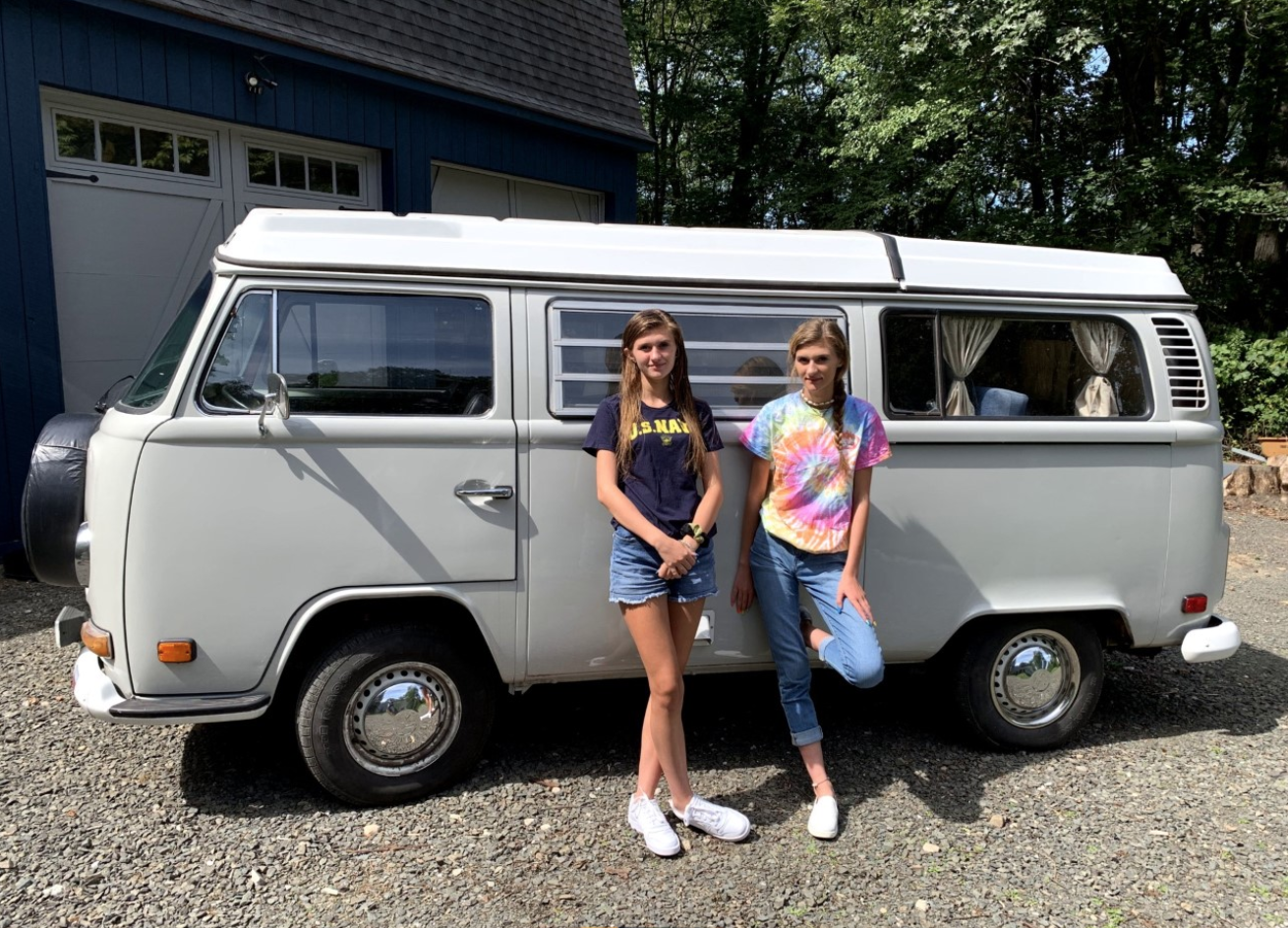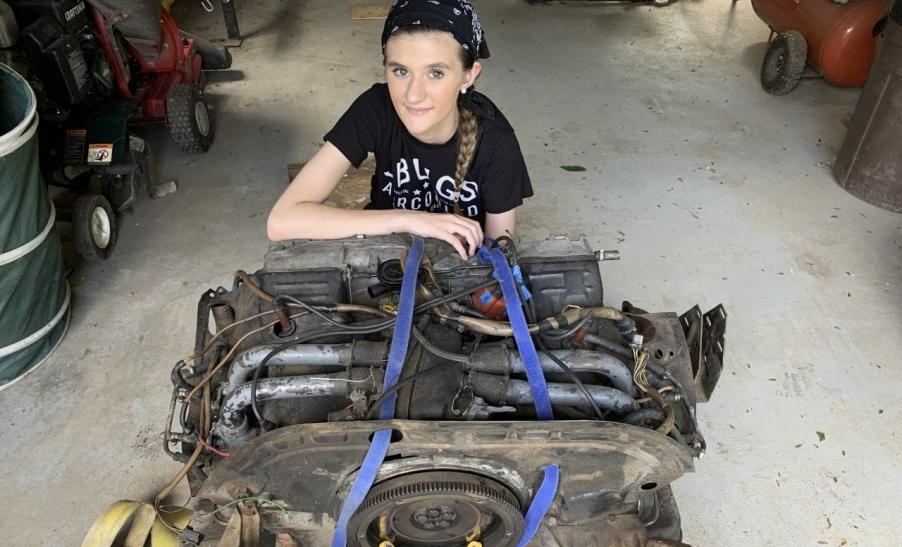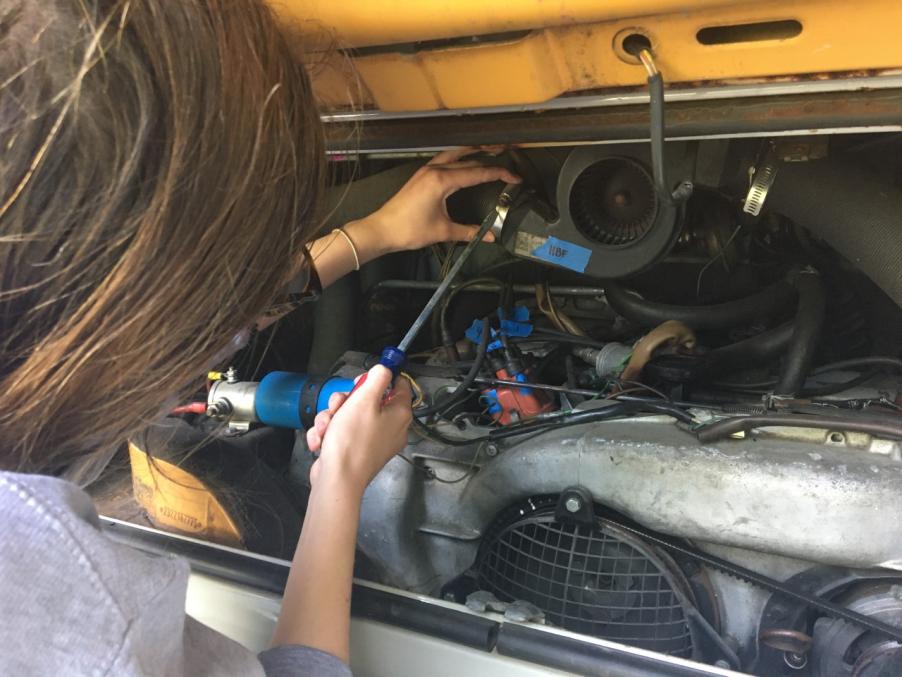
By Manat Kaur
Nearly a third of all carbon dioxide in the atmosphere comes from automobiles alone. What’s more, cars and other motor vehicles are responsible for over half of the earth’s carbon monoxide pollution, a highly toxic greenhouse gas.
When Allie and Chloe reached the driving age, they wanted to be part of the solution, not the problem. They asked: “If we can’t afford an electric vehicle, can we build one?” Hoping to drive collective change, the 16-year-olds started The Electric Monkeys to help anyone convert their cars’ engines to electric. Today they’re building teams of teams through an educational curriculum, designed to help others follow in their footsteps and drive more sustainably.
Ashoka Young Changemaker Manat Kaur connected with Allie and Chloe to learn more about how they hope to grow the organization and their practical, plan-based approach.
Tell us about your project.
The Electric Monkeys is a project to grow the learning and enthusiasm for DIY electric vehicle conversions. Our goal is to create an educational online resource to explain everything you need to know for converting a vehicle from a combustion engine to electric one.
We use real projects to develop detailed write-ups, photos, and videos of the process from beginning to end, providing all the educational resources to make it possible for anyone to complete their own electric vehicle conversion. We hope our site will become a virtual club for projects around the world and a resource for all skill levels to ask questions and share knowledge.
When did you first realize you had to take action, and how did you come up with your idea?
It started with a purpose to find opportunities for sustainable living and the use of clean energy. We are teenagers approaching the driving age, so we are very focused on electric cars. Although we can’t afford an electric vehicle, can we build one? If we can, shouldn’t it be possible for anyone else as well? Our goal is to break the boundaries of cost and complexity.
What was your first step?
We spent months learning, researching, and planning our approach and schedule. We figured out the specifications and budget for all the parts. We completed our first build over the summer. While building, we filmed our experience so that we could incorporate it in our learning materials to empower others to make their own electric vehicles.
We are focused on making sure our educational resource is credible and viable. If people are going to spend time and money on a project, they need to know we’ve invested the same effort and had the same experience. Then, they will count on the resources we put forward.
How did you start implementing your idea?
We needed to convert one vehicle from gas to electric to launch our project. We started with a classic 1972 Volkswagen Camper Van. We’ve been working hard to develop the learning materials and step-by-step instructions to complete the installation. The experience has reinforced our commitment to the project.
It is very hard to find structured and detailed instructional material for electric vehicle conversions. Although it’s been difficult, we are also reassured that it is possible.
What obstacles did you face and how have you overcome them?
The main premise of the project is our pledge to benefiting “anyone and everyone.” Inclusion is fundamental to our motivation for launching the project. This means we face two key challenges: first, ensuring our learning resources can benefit all levels; and second, finding ways to reduce the costs as much as possible. Developing the learning resources for all skill levels is a natural course since we are going through the process ourselves.
But managing the cost has proven to be more difficult. We can’t claim that everyone can do it with project costs at $20K or more. We are working very hard to reduce the costs since the more people we have who can replicate the project, the greater impact it will have.
What advice would you give to other young people who want to make a difference but don’t know where to begin?
One of the fundamental lessons we’ve learned through the process is the need to make sure a project is viable. It’s a concept that comes into play when you start working out the details for how to implement an idea and maximize its impact. It is also the basis for building trust and credibility.
The practical implementation needs to be guided by having a strategy, careful planning, seeking advice and expert opinion, evaluating costs, and other preparation activities to increase your chances of success.
-
This interview has been edited for length and clarity.
The First Steps series, founded by Ashoka Young Changemaker Manat Kaur, aims to demystify changemaking and show how anyone can start making a change. Follow Ashoka to learn more about young changemaker stories.


